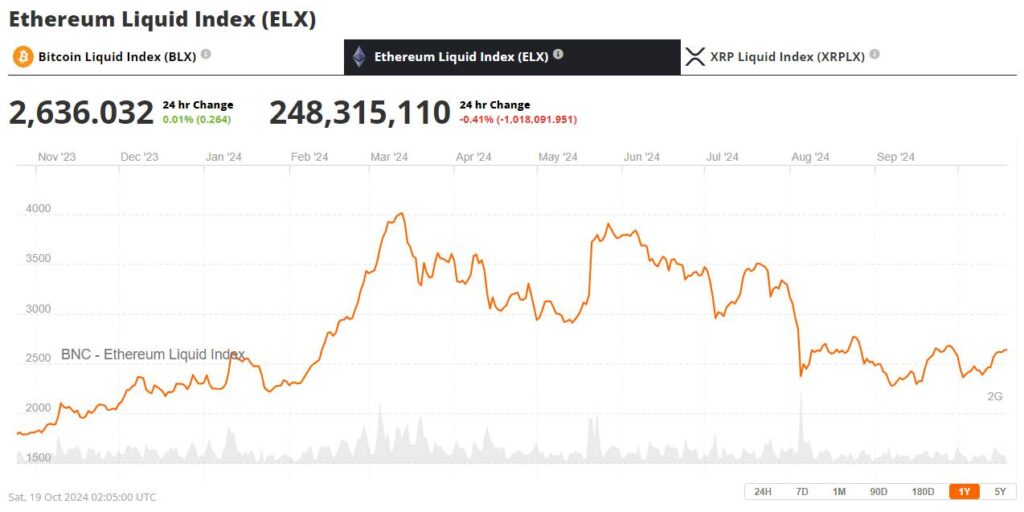Seven months after the introduction of BLOB transactions with Ethereum's Dencun upgrade, developers are preparing another big update with the upcoming Pectra fork. This new Ethereum Improvement Proposal (EIP-7742) aims to improve the scalability of the network by streamlining transactions that carry BLOBs.
said Christine Kim, vice president of research at Galaxy Digital. share Details of the proposal were announced via X on October 17th after Ethereum's “all core developers” meeting. EIP allows the Ethereum consensus layer to dynamically adjust Blob gas targets and maximum values, which is expected to improve the efficiency of Layer 2 (L2) transactions.
What is an Ethereum BLOB?
Ethereum blobs are large and ephemeral data chunk Incorporated into Ethereum transactions. BLOBs were first implemented via EIP-4844 in Ethereum's Dencun upgrade on March 13, 2024 to reduce the cost of L2 transactions, but the fixed BLOB count is now nearing capacity. Ethereum co-founder Vitalik Buterin recently expressed concern that this limitation could hinder scalability if not addressed quickly.
Kim believes that the EIP-7742 update may increase the number of blobs for Pectra upgrades. Other potential scalability improvements, such as gas limits and slot time changes, are unlikely to be included in this fork. Ethereum developer Alex Stokes elaborated Additionally, GitHub explains that making the target values of blob parameters more flexible will reduce the rigidity caused by the current fixed limits.
The Pectra fork is expected to be rolled out by the end of 2024 or early 2025. Another proposal, EIP-7623, aims to create more space for Blobs by reducing Ethereum's maximum block size from 2.7 MB to approximately 1 MB.
This development is consistent with Buterin's broader plans objective A key element of Ethereum's “Surge” strategy is to enable Ethereum to reach 100,000 transactions per second by incorporating mainnet and layer 2 scaling solutions.
How Layer 2 Scaling Impacts Ethereum Revenue
Despite the promise of cheaper transactions, Layer 2 scaling methods have significant drawbacks. According to Matthew Sigel, head of digital asset research at VanEck, Ethereum's revenue share from transactions has declined significantly as layer 2 networks have become a larger part of the ecosystem.
Siegel pointed out in an article on October 17th. post According to X, over the past four months, the Ethereum mainnet and layer 2 revenue split has moved to 10:90, completely reversing the 90:10 ratio used in previous predictions. This forced Siegel to revise Van Eck's bullish prediction that Ether would rise above $22,000 by 2030. This forecast was estimated based on a 90/10 revenue split, which is the exact opposite of what has happened over the past four months. Siegel said if this split remains unchanged, VanEck's Ether price target would be down 67% to $7,330.
The situation could get even worse as decentralized exchange Uniswap, one of Ethereum's biggest revenue drivers, pivots away from Ethereum by creating a new layer 2, Unichain.
Ethereum demand slows down

Ethereum price has been steadily declining since its recent peak of $3,907 on May 27th. Source: Brave New Coin Ethereum Liquid Index
According to Fx StreetThe US Spot Ethereum ETF experienced three days of inflows and one day of small outflows, totaling $79.9 million through Thursday. Tracking ETF flows can provide useful information about institutional opinion on Ethereum, but current inflow levels would need to increase dramatically to have a significant impact on the price.
Compared to other cryptocurrencies, Ethereum's price has not fared very well since the bull market began at the end of 2023. A weak debut and weak demand for the US-listed spot ETH ETF are two reasons for this price shortfall. From August to October, open interest (OI) increased by 28.57% to $9.6 billion, which is still significantly lower than June's $13 billion.

